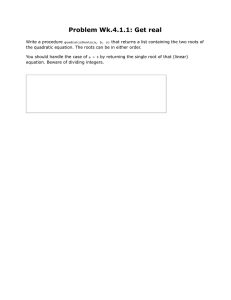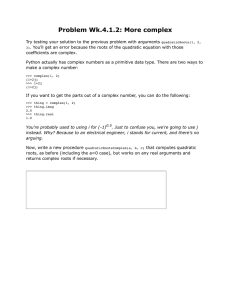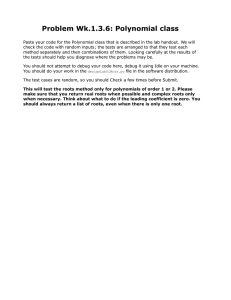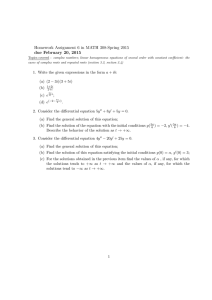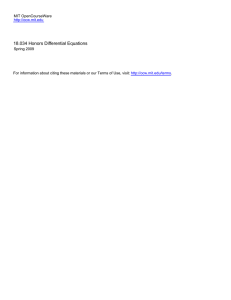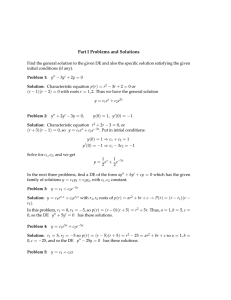Part
advertisement
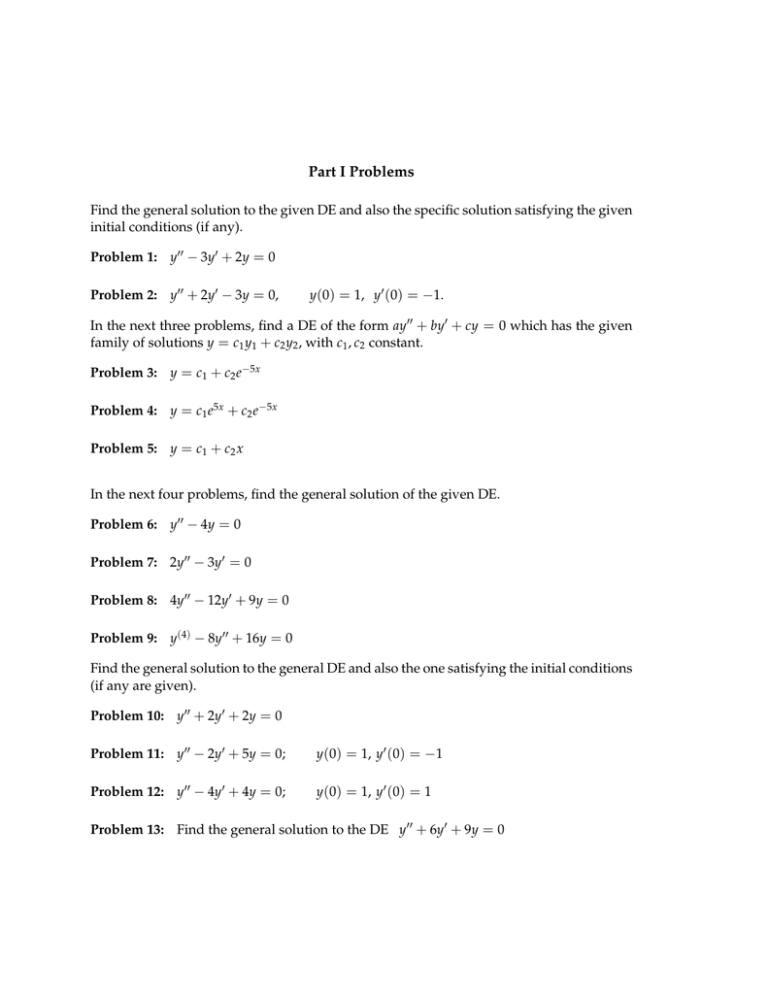
Part I Problems Find the general solution to the given DE and also the specific solution satisfying the given initial conditions (if any). Problem 1: y�� − 3y� + 2y = 0 Problem 2: y�� + 2y� − 3y = 0, y(0) = 1, y� (0) = −1. In the next three problems, find a DE of the form ay�� + by� + cy = 0 which has the given family of solutions y = c1 y1 + c2 y2 , with c1 , c2 constant. Problem 3: y = c1 + c2 e−5x Problem 4: y = c1 e5x + c2 e−5x Problem 5: y = c1 + c2 x In the next four problems, find the general solution of the given DE. Problem 6: y�� − 4y = 0 Problem 7: 2y�� − 3y� = 0 Problem 8: 4y�� − 12y� + 9y = 0 Problem 9: y(4) − 8y�� + 16y = 0 Find the general solution to the general DE and also the one satisfying the initial conditions (if any are given). Problem 10: y�� + 2y� + 2y = 0 Problem 11: y�� − 2y� + 5y = 0; y(0) = 1, y� (0) = −1 Problem 12: y�� − 4y� + 4y = 0; y(0) = 1, y� (0) = 1 Problem 13: Find the general solution to the DE y�� + 6y� + 9y = 0 Part I Problems OCW 18.03SC In the next two problems, solve the given initial-value problem. Problem 14: y�� − 4y� + 3y = 0, y(0) = 7, y� (0) = 11. Problem 15: y�� − 6y� + 25y = 0, y(0) = 3, y� (0) = 1 Problem 16: For the equation y�� + 2y� + cy = 0, c constant, a) Tell which values of c correspond to each of the three cases: two real roots, repeated real root, and complex roots. b) For the case of two real roots, tell for which values of c both roots are negative, both roots are positive, or the roots have different signs. c) Summarize the above information by drawing a c-axis, and marking the intervals on it corresponding to the different possibilities for the roots of the characteristic equation. d) Finally, use this information to mark the interval on the c-axis for which the correspond­ ing ODE is stable. (The stability criterion using roots is what you will need.) 2 MIT OpenCourseWare http://ocw.mit.edu 18.03SC Differential Equations�� Fall 2011 �� For information about citing these materials or our Terms of Use, visit: http://ocw.mit.edu/terms.
